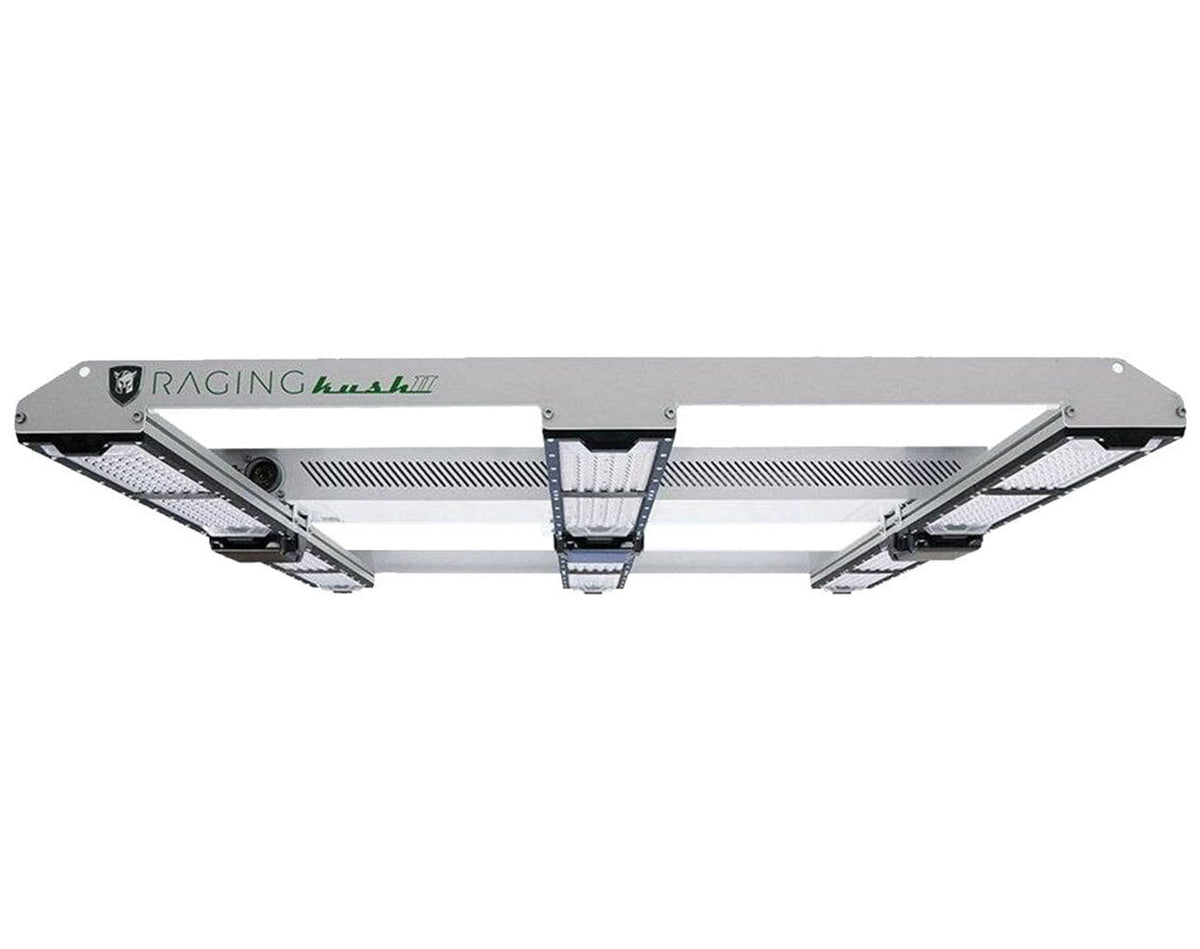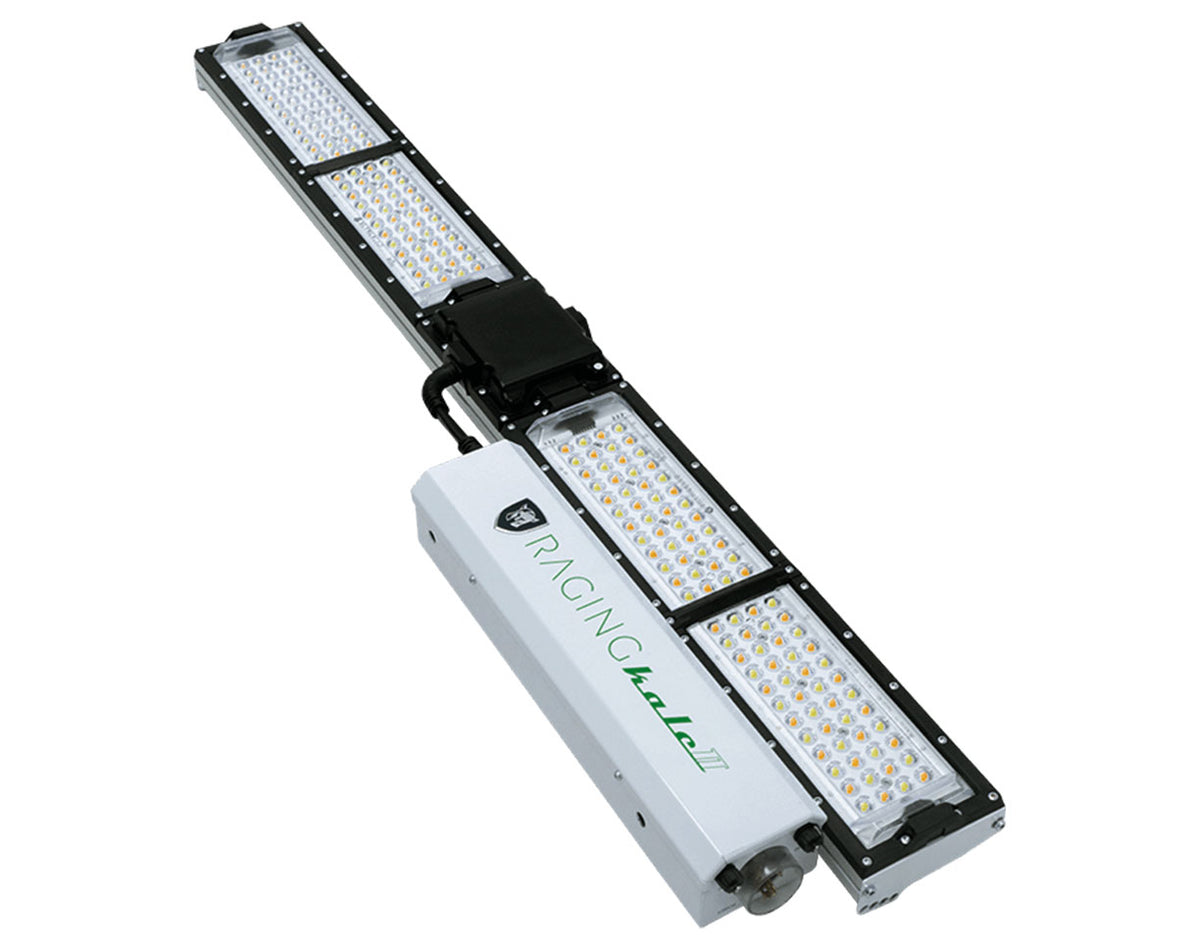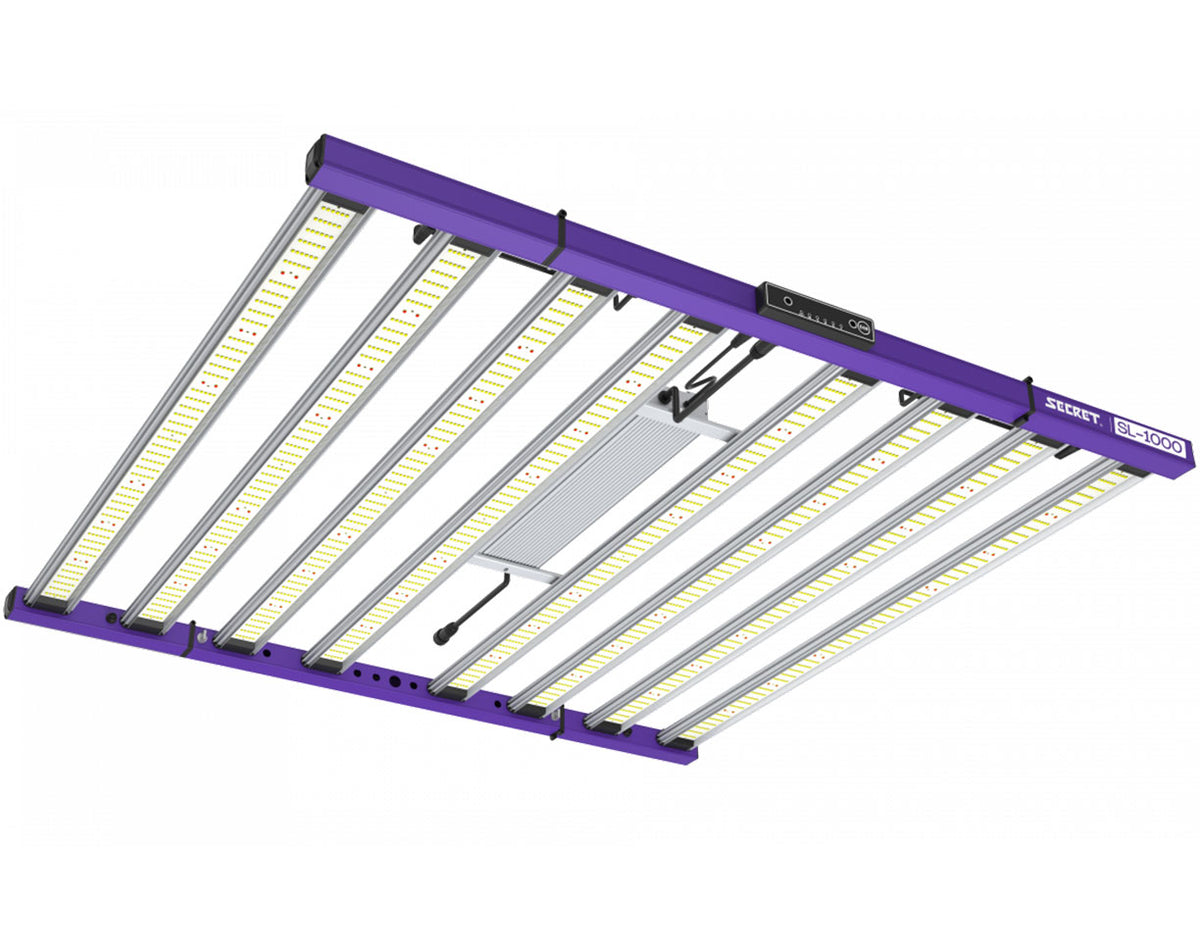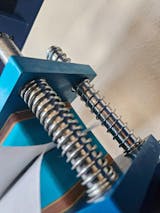If you’re the type of grower who wants to truly understand how every component of your setup works, you know the right light can make or break a harvest. But have you ever wondered why your lower leaves stay weak or your yields just don’t add up, even when your grow light seems powerful enough? The issue often isn’t about raw power; it’s about how well that light actually reaches every layer of your canopy.
Table of Contents
- PPF vs. PPFD: What’s the Difference?
- How PPFD Changes With Hanging Height
- Understanding Light Penetration in Canopies
- Why Light Distribution Matters More Than Just More Watts
- Optic LEDs and Precision Lighting
- Product Picks for Better Canopy Coverage
- Does Higher Wattage Improve Yields?
- Key Takeaways & Final Thoughts
What you’ll learn: You’ll discover how to read grow light specs, avoid common wattage mistakes, and arrange your indoor LED grow lights for plants for even, healthy growth—so every part of your canopy thrives.
PPF vs. PPFD – What Do “μmol/s” and “μmol/m²/s” Mean?
When you’re choosing LED grow plant lights, two numbers you’ll often see are PPF and PPFD, both expressed in micromoles of photons (that’s “μmol”). Here’s what they each mean—and why both matter:
1. PPF (Photosynthetic Photon Flux) – “Total Photon Output”
-
What it measures: The total number of photosynthetic photons a light produces every second.
-
Units: μmol/s (micromoles per second)
-
Analogy: Think of PPF like the total water flowing out of a hose, but without considering how wide the spray is. It tells you how much light the fixture can push out, period.
2. PPFD (Photosynthetic Photon Flux Density) – “Photon Intensity on Your Plants”
-
What it measures: How many of those photons actually land on each square meter of your canopy every second.
-
Units: μmol/m²/s (micromoles per square meter per second)
-
Analogy: Now imagine you’re watering a garden with that hose. PPFD is like measuring how many drops hit each patch of soil per second. It tells you how intensely your plants are being lit.
How They Work Together
-
A lamp might have a PPF of 1000 μmol/s—that’s a lot of light leaving the fixture.
-
If you spread that light evenly over 2 m² of plants, each square meter only gets 500 μmol/m²/s (1000 divided by 2).
-
But if you focus the same lamp onto just 1 m², you’ll get the full 1000 μmol/m²/s on that smaller area.
In other words:
PPFD Measurements and Hanging Height
Crucially, PPFD is not a fixed property of the light – it changes with distance and coverage. Manufacturers and independent testers typically specify the hanging height at which a PPFD measurement is taken, because the distance from the lamp affects how concentrated or dispersed the light is. The photons from a grow light radiate outward, so raising the fixture higher spreads the light over a larger area (lowering the intensity), while lowering it concentrates light into a smaller footprint (raising the intensity).
In practice, PPFD values are obtained by mounting the light at a specific height above a sensor grid and measuring the photon flux at various points on the canopy. Reputable grow light data will include either a PPFD map or an average PPFD for a given area at a stated hanging height (e.g., “PPFD = 500 μmol/m²/s average over a 3×3 ft area at 18 inches height”). Without a reference height, a quoted PPFD number is incomplete, since the same lamp will have very different PPFD readings at 12″ versus 36″ above the canopy. In other words, PPFD “500 μmol/m²/s” is only meaningful if we know where it was measured.
Quick Example
-
Lamp’s PPF: 1000 μmol/s
-
Hung low (small area) → High PPFD at center, narrow spread.
-
Hung high (bigger area) → Lower PPFD, wider coverage.
If all 1000 μmol/s are perfectly distributed over 1 m², you’d see 1000 μmol/m²/s. Spread it over 2 m², and it drops to 500 μmol/m²/s.
Light Penetration in Plant Canopies
Imagine your plant canopy as a crowded theater. The front-row leaves (the uppermost ones) soak up virtually all the “spotlight” so the folks in the back (the lower leaves) barely see any action. Here’s what’s going on:
1. Top Leaves Hoard the Light
-
Saturation Point: Upper leaves hit their photosynthesis “limit” well before full-sun intensity. Once they have enough photons, any extras just get turned into heat or protective pigments—wasted from a growth standpoint.
-
Spectral Absorption: Red and blue light are like VIP passes—about 90–95% get gobbled up in the first cell layers of a leaf, leaving almost nothing for deeper foliage. Green light is the wallflower; around 12–23% slips through or scatters downward, so it helps illuminate the middle and back rows a bit more.
2. Light Needs a Path to the Understory
3. Why Distribution Beats Just “More Light”
The takeaway: It’s not just about blasting plants with more photons. It’s about where and how those photons are delivered. A well-lit canopy means every leaf gets its share of the spotlight, from top to bottom.
To help you achieve that, check out our wide collection of Under Canopy Grow Lights. These fixtures tuck right between your plant tiers, delivering extra photons exactly where you need them most.
What is Optic LED? Precision Beams for Deeper Penetration
One more game-changer is Optic LED technology, with Scynce LED grow lights setting the industry standard. It reflects a sophisticated optical strategy engineered to redirect and evenly distribute light across the canopy, improving depth penetration and eliminating hotspots.
Why Evenness Is Crucial
-
Bare LED lights emit like a “balloon”: intense in the middle, weak at the edges. That leads to scorching directly below and light-starved leaves around the perimeter. Scynce’s optics take those photons and push them outward, smoothing the intensity curve across the plant canopy.
- Even lateral beams ensure cross-lighting—fixtures illuminate each other’s shadows, deepening light penetration and delivering almost flat PAR across the entire grow area
Scynce's Precision Beam Shaping with Advanced Optics
- Scynce’s Linear 70° optic houses up to 60 W of LEDs per lens and emits a dual‐beam: concentrated ±35° along the length and ±60° across. This design spreads light wider while penetrating deeper, perfect for high ceilings or greenhouse rigs.
-
The result? Up to 41% more usable light reaches the canopy despite a ~10% reduction in raw efficacy from the optics—an energy trade-off that significantly boosts real-world performance.
Real‑World Impact on Plant Growth
-
Sharper beam cut‑offs minimize spill onto walls and aisles, focusing every photon where the plants grow
-
The peak PPFD shifts outward, so fixture arrays deliver overlapping, blended beams that penetrate several feet into dense foliage
- Across mounting heights (24", 48", 72"+), the uniformity holds from top leaves to the lowest shoots, maximizing photosynthesis throughout.
Want to put these principles into practice? Try one of these:
Scynce LED Raging Kush II
The Raging Kush II is engineered with patented secondary optics that spread intense, full-spectrum light evenly across the entire canopy. Its four-channel spectrum tuning allows growers to dial in the perfect blend of wavelengths for every stage, while the focused 120° optics ensure that even lower leaves and shaded buds receive ample PAR. This design eliminates hotspots and shadows, maximizing light penetration and encouraging robust growth from top to bottom. It’s perfect for tall or dense canopies where even distribution and deep reach are critical.
Scynce LED Raging Kale II and Kale II+
Ideal for vegetative and early growth, the Raging Kale II and Kale II+ use Scynce’s advanced lens technology to bathe plants in uniform, tunable white and red light. These compact, low-profile fixtures fit easily into tight spaces or under existing grow plant LED lights, delivering consistent PPFD deep into every layer of the canopy. With their even coverage and spectrum adjustability, they prevent weak lower growth and promote lush, even development, making them perfect for rack systems, propagation, or supplemental under-canopy lighting.
HLG Scorpion Ultima Diablo X
With a staggering 4614 μmol/s output, the Scorpion Ultima Diablo X delivers more light than nearly any other LED, ensuring even the lowest branches get strong PAR. Eight large quantum boards and integrated reflectors distribute this power top-to-bottom and wall-to-wall, dramatically increasing uniformity and minimizing shadows. Dual-zone dimming allows fine-tuning for any grow stage, so you can push light exactly where it’s needed. This fixture is built for growers who want absolute penetration and yield in large, high-density indoor setups.
Secret Lighting SL-1000 “Stealth”
The SL-1000 "Stealth" is a true 1000W powerhouse with an 8-bar design that spreads its intense, full-spectrum output across a wide footprint. Its form factor eliminates hotspots and delivers consistent, penetrating light from corner to corner and top to bottom, helping all plant sites flourish, especially those deep in the canopy. Built-in dimming and high efficiency allow it to excel in both tents and open rooms. With robust certifications and real 1000W draw, it’s a top pick for serious indoor growers demanding complete, uniform penetration.
Does Higher Wattage Improve Canopy Penetration and Yields?
Simply turning up your light’s wattage does make the very top leaves brighter—and can boost bud size up there—because you’re dumping more photons per second onto the canopy. But those extra photons don't magically “punch through” leaves. Once the top leaves are full, any extra light just turns into heat or is reflected away, leaving the lower foliage still in the dark.
To really get light deeper into your plants, you need to spread those extra photons over a wider area or from multiple angles. For example, if you hang the light higher and crank up the power so the top still gets your target PPFD (light intensity), more photons slip through gaps and bounce off walls, gently lighting the lower leaves. Likewise, using several lights, a bigger panel, or optics that focus beams outward creates overlapping cones of light that wrap around the canopy. Reflective walls or side-mount grow plants LED lights also help by redirecting photons into shaded spots. In short, more watts alone just blast the top—smart placement and distribution are what really brighten the bottom.
Conclusion
Higher wattage does boost light intensity and yield at the top of your plants, but it won’t pierce the dense upper leaves to reach lower foliage. To truly light the whole canopy, you need good distribution—think proper hanging height, multiple or wider fixtures, focused optics, and wavelengths like green or far-red that travel deeper. When photons are spread evenly through every layer, all leaves pull their weight in photosynthesis, driving stronger, more uniform growth and maximized yields.














Leave a comment